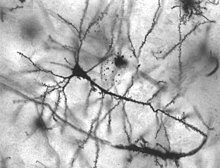
Back اضطراب عصبي Arabic Malaltia neurològica Catalan Enfermedad neurológica Spanish اختلال عصبی Persian Trouble neurologique French הפרעה נוירולוגית HE ನರವೈಜ್ಞಾನಿಕ ಅಸ್ವಸ್ಥತೆಗಳು Kannada 신경계 질환 Korean Neurologische aandoening Dutch ਮਾਨਸਿਕ ਵਿਕਾਰ Punjabi
Neurological disorders represent a complex array of medical conditions that fundamentally disrupt the functioning of the nervous system. These disorders affect the brain, spinal cord, and nerve networks, presenting unique diagnosis, treatment, and patient care challenges. At their core, they represent disruptions to the intricate communication systems within the nervous system, stemming from genetic predispositions, environmental factors, infections, structural abnormalities, or degenerative processes.
The impact of neurological disorders is profound and far-reaching. Conditions like epilepsy create recurring seizures through abnormal electrical brain activity, while multiple sclerosis damages the protective myelin covering of nerve fibers, interrupting communication between the brain and body. Parkinson's disease progressively affects movement through the loss of dopamine-producing nerve cells, and strokes can cause immediate and potentially permanent neurological damage by interrupting blood flow to the brain. Diagnosing these disorders requires sophisticated medical techniques. Neuroimaging technologies like MRI and CT scans and electroencephalograms provide crucial insights into the intricate changes occurring within the nervous system. Treatment approaches are equally complex, involving multidisciplinary strategies, including medications to manage symptoms, control brain activity, or slow disease progression, coupled with neurological rehabilitation to help patients develop compensatory strategies.
| Neurological disorder | |
|---|---|
 | |
| Neurons in person with epilepsy, 40x magnified | |
| Specialty | Neurology |
Ideally, a neurological disorder is any disorder of the nervous system. Structural, biochemical or electrical abnormalities in the brain, spinal cord, or other nerves can result in a range of symptoms. Examples of symptoms include paralysis, muscle weakness, poor coordination, loss of sensation, seizures, confusion, pain, tauopathies, and altered levels of consciousness. There are many recognized neurological disorders; some are relatively common, but many are rare.
Interventions for neurological disorders include preventive measures, lifestyle changes, physiotherapy or other therapy, neurorehabilitation, pain management, medication, operations performed by neurosurgeons, or a specific diet.[1][2] The World Health Organization estimated in 2006 that neurological disorders and their sequelae (direct consequences) affect as many as one billion people worldwide and identified health inequalities and social stigma/discrimination as major factors contributing to the associated disability and their impact.[3]
- ^ KT, Thakur; E, Albanese; P, Giannakopoulos; N, Jette; M, Linde; MJ, Prince; TM, Steiner; T, Dua (14 March 2016). "Neurological Disorders". Mental, Neurological, and Substance Use Disorders: Disease Control Priorities, Third Edition (Volume 4). Chapter 5 Neurological Disorders. Washington (DC): Patel V, Chisholm D, Dua T, et al. pp. 87–107. doi:10.1596/978-1-4648-0426-7_ch5. ISBN 978-1-4648-0426-7. PMID 27227247.
- ^ Cite error: The named reference
ZisHadjivassiliou2019was invoked but never defined (see the help page). - ^ "WHO | Neurological Disorders: Public Health Challenges". March 14, 2007. Archived from the original on 14 March 2007.